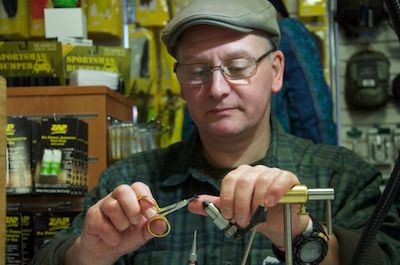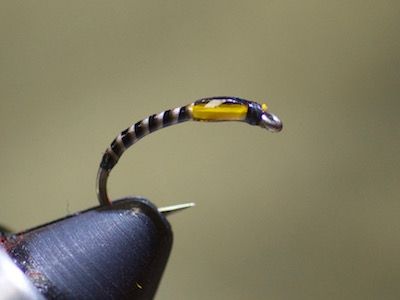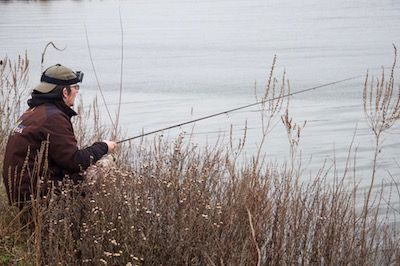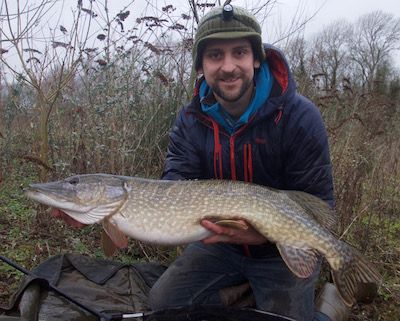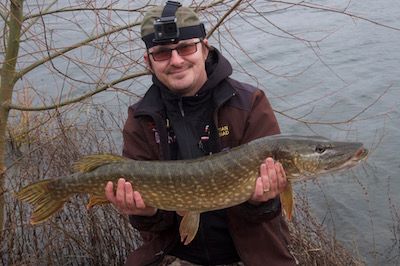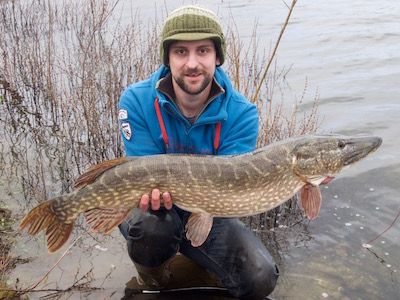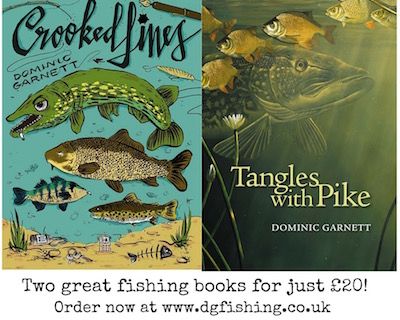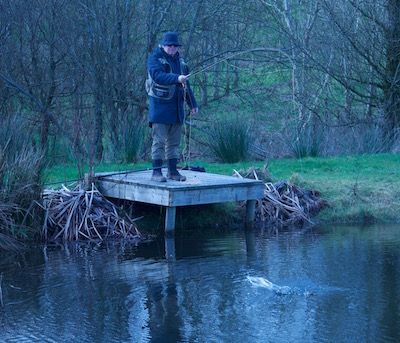
Which is why Simpson Valley Fishery makes a refreshing change. There are very few catch and release fly fisheries in Devon, full stop. Owners fear that their fish will either grow wary or they will lose stock anyway, due to the fragility of rainbow trout and (so, shoot me), the not very brilliant catch and release skills of many game anglers. Perhaps this is connected to the lack of catch and release fisheries?!!
But here, at least, in a quiet corner of North Devon, the game changes a little. You don’t have that risk of your day being over in under an hour, effectively, should the fish be too bold and easy to catch. Nor do you end up with four trout in the freezer when you only really needed one (even my trout in mustard sauce loses its charm after a couple of nights). Equally refreshing, as some readers might note with interest, you are free to lure fish here provided you use single barbless hooks.
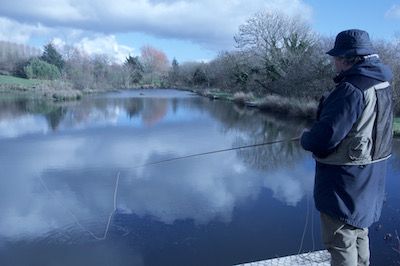
A £20 day ticket is decent value for quality rainbow trout fishing, but fisheries such as this, and their stocks, need respect if the owners are to continue offering such tickets. Sensible rules include barbless hooks only and these tickets only running through the colder months, since rainbows suffer much higher mortalities in warm water. Nor should you take the piss, and I can think of little more pointless than catching silly numbers of trout by pulling streamers through the water. No, this is the type of fishery to try a subtle approach and enjoy testing different presentations with smaller flies.
Much as I enjoy getting features and pictures done, I like to keep a good number of sessions for pure pleasure these days. Excessive target setting and deadlines can be the enemy of fun. So I took my dad, a self-confessed fair weather fisher, for a semi-lazy day out.
At first, the trout were a little slow to respond on Mallard Lake. I tried a long leader with a Superglue Buzzer on point, but it was a Diawl Bach on the dropper that got the first take. A pretty fish of about a pound and a half, I barely handled it at all, keeping it wet using the landing net head in the margin. There really isn’t any need to yank these fish out and have them flap on the bank and get stressed.

But with the lake flat calm for the next hour or so, sport was slow and it didn’t take me long to dig a pike fly setup out of the car. Mallard is unusual in containing pike. Most fly fishery owners wouldn’t dream of stocking any. You don’t suspect there are many big pike in the lake; you tend to see little jacks that probably stay small, because they cannot handle the rainbows and without any coarse fish beyond the occasional perch they probably struggle to kick on. Even so, it’s worth a go for them here in your trout session, because there are almost certainly one or two good fish.
I did a lap of the whole lake in around an hour, running a large pike fly into every likely area. In fairness I did see one, and it was a good twenty…. centimetres. By which time, the breeze was picking up and I felt reasonably confident the trout would respond better.
Such is the way with buzzer fishing. If it’s flat calm, you have to manipulate the flies more. Nothing like as good as casting into a nice ripple and simply letting the flies drift with very little retrieve to speak of. Do nothing is often the best policy- just wait for the pull.
The bites were not always positive on a cool afternoon. With the next bite, the only signal was my leader “sinking” a bit too quickly. This in itself was an indication that the fish were a little higher in the water than I’d expected. In fact, you can tell a lot by the time it takes to get a bite, especially when you’re barely retrieving the flies. If it’s a good minute or more after casting out, you can be fairly sure that the fish are several feet down. Savvy anglers will then switch to heavier or lighter flies in order to spend more time in the “take zone.”

Pretty soon, the fair weather king also struck. And although we pretend not to keep score on these trips, he hit a run of trout to come from 2-0 down to 3-2 in the lead.
If anything, the action seemed better on the smaller Skylark lake, where the wind was concentrating the fish in one corner. I was getting bites on a Black Superglue Buzzer, but it still wasn’t plain sailing, with many bites quite tentative. Eventually, a switch to a smaller fly worked best- in this case a size 14 Satanic Buzzer, which has to be one of the greatest trout flies never to be commercially produced! Basically it’s a buzzer with two little red flexi-floss horns.
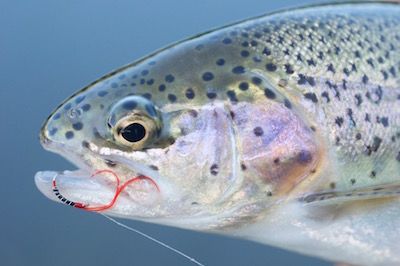
Could we have cleaned up on lure style flies? I don’t really care, because I love fishing the buzzer, using the elements for a natural presentation and picking out those subtler takes. We finished with a dozen trout between us, every one of them unhooked in the landing net with minimal handling.
A very pleasant and increasingly rare day off I’d say, with twelve trout between us a nice result for a crisp, cold day without a great deal of breeze or insect life! This is a cracking winter fishery and the C&R tickets run through till 1st of April if you’re keen to try. It’s also a spot I’ve used successfully on several occasions for guided fly fishing trips in Devon; do drop me a line if you fancy learning to fly fish, or refining your casting and fishing skills (more details on all my fishing tuition and guided angling here).
Last but not least, do take a look at the current Turrall Flies Blog for more fishing tips and some superb fly patterns. Chris Ogborne recently gave us a cracking little blog post on gearing up for saltwater sport, while the next entry will be focused on catch and release tips that both coarse and fly anglers can learn from. It still surprises me how few words are written on this important subject each season, while we cover tactics, baits and venues to death! To my mind, it’s something even experienced anglers can improve at and learn more about their quarry- myself included. Check out all the blog posts HERE.


